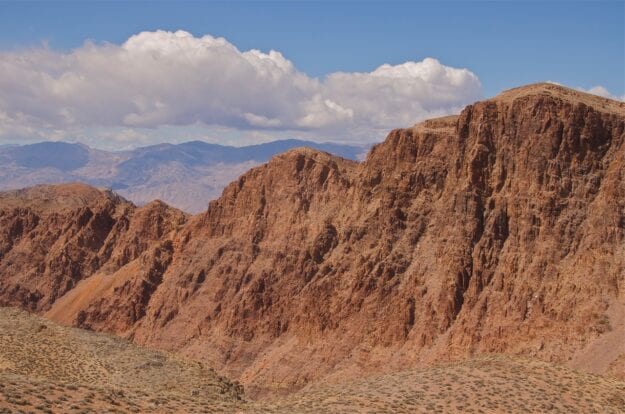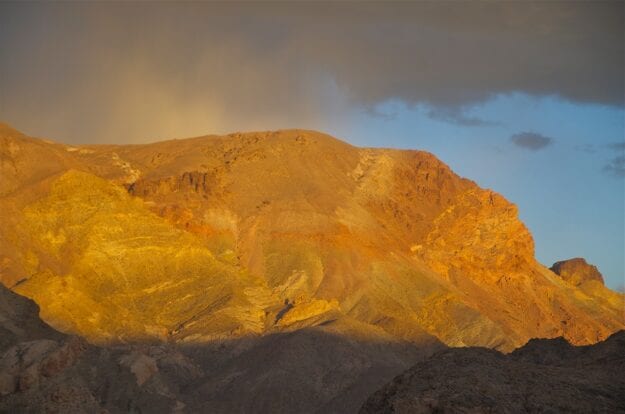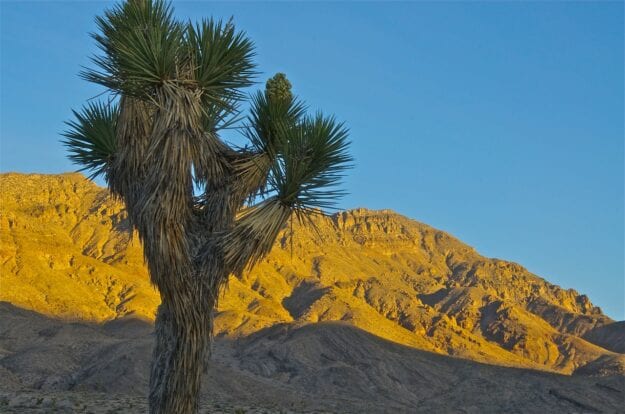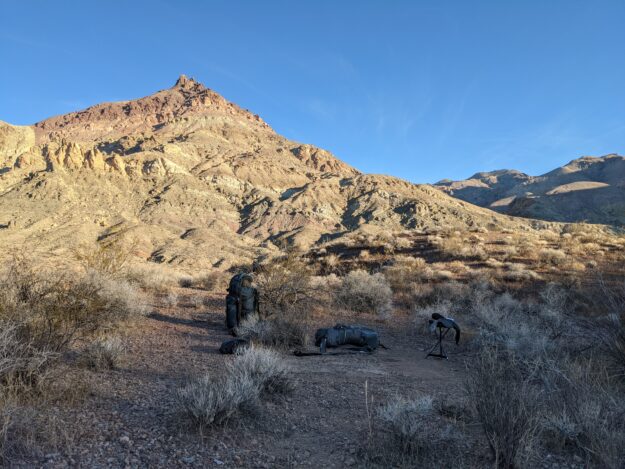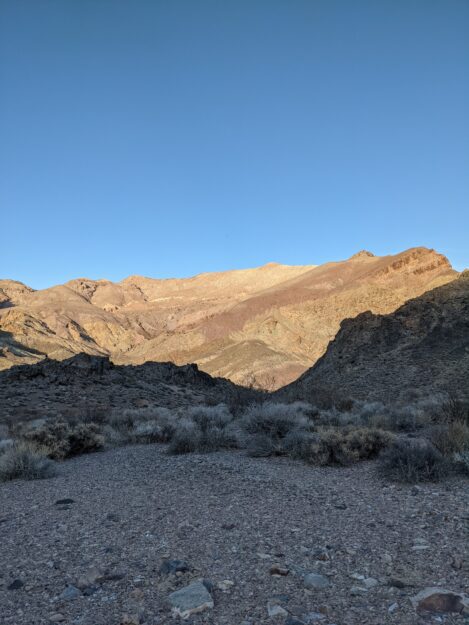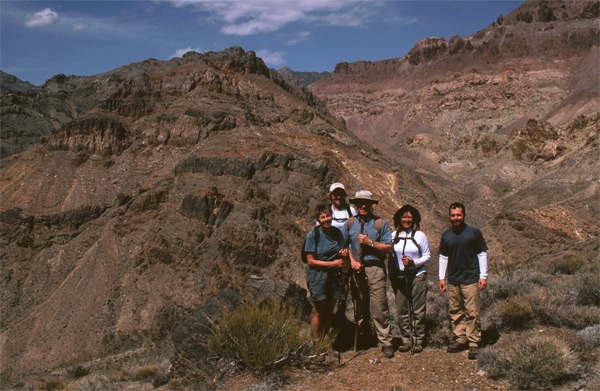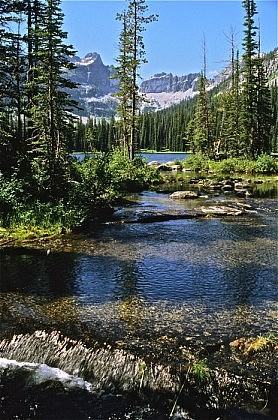DEATH VALLEY NP-MOJAVE DESERT BIG MOUNTAIN BASE-CAMP
California • $2,100: November 11-November 16, 2024
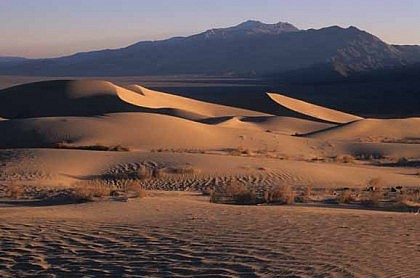 Death Valley National Park is the largest national park in the lower 48 states! At roughly 3.4 million acres, with 93% protected as designated wilderness , Death Valley is a land of sparse contrasts and wild horizons. Low lying valley floors, barren salt flats, wind swept sand dunes, deeply carved canyons and mountain peaks above 11,000ft all exist within this truly wild landscape. This trip is high above the scorched valley floor, with unique Mojave Desert vegetation including scattered Joshua trees. Multiple vegetation zones exist within Death Valley National Park and a variety of wildlife species call this place home. There are desert bighorn sheep, mule deer, cougar, bobcat, kit foxes, and coyote. 307 different bird species cross the border of this park per year. Spring wildflowers can abound in moist years. Enjoy spectacular views of this little-known wild landscape! Despite the parks’ namesake valley, this trek is a colorful and rugged mountain wilderness! Warm, dry days with cool to cold nights are the rule on this moderately rated trip, based out of Las Vegas.
Death Valley National Park is the largest national park in the lower 48 states! At roughly 3.4 million acres, with 93% protected as designated wilderness , Death Valley is a land of sparse contrasts and wild horizons. Low lying valley floors, barren salt flats, wind swept sand dunes, deeply carved canyons and mountain peaks above 11,000ft all exist within this truly wild landscape. This trip is high above the scorched valley floor, with unique Mojave Desert vegetation including scattered Joshua trees. Multiple vegetation zones exist within Death Valley National Park and a variety of wildlife species call this place home. There are desert bighorn sheep, mule deer, cougar, bobcat, kit foxes, and coyote. 307 different bird species cross the border of this park per year. Spring wildflowers can abound in moist years. Enjoy spectacular views of this little-known wild landscape! Despite the parks’ namesake valley, this trek is a colorful and rugged mountain wilderness! Warm, dry days with cool to cold nights are the rule on this moderately rated trip, based out of Las Vegas.
The Cottonwood, Funeral, Saline, Last Chance, Grapevine and Owlshead Mountains are some of the high rugged desert ranges that we may visit (route dependinin this huge park. If you envision Death Valley mainly as a sun-scorched desert flat with very little life, think again. The colorful topography and diversity on this trip will amaze you!
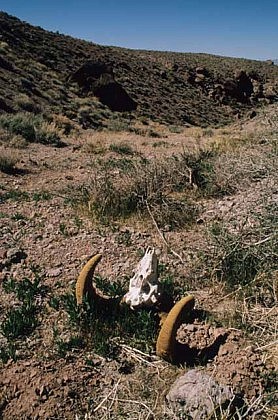 TREK BASE: Las Vegas, Nevada. Ellis Island Hotel, 4250 Koval Lane, (702) 794-0888.
TREK BASE: Las Vegas, Nevada. Ellis Island Hotel, 4250 Koval Lane, (702) 794-0888.
PRE-TREK MEETING TIME: Pre-trek orientation including food and gear handout plus safety talk at 6 pm the evening prior to the first day of the trip; meet in Ellis Island Hotel lobby.
THE TREK: This journey is two distinct adventures into two different areas of the park’s mountains. On each trip segment, we’ll backpack in 2 miles from a remote desert dirt road and set up a base camp, from which we’ll day-hike and explore the surrounding desert mountains and canyons. At the end of day 4 we will hike back to our vehicle and continue our journey to the next back country location. We will stop and have lunch en route to the second base camp at one of Death Valley’s scenic sites. The first trip segment is 3.5 days/3 nights, and the second 2.5 days/2 nights in the wilderness. Day 4 will be the transition day, when we move from the first leg of the trip to the second.
TREK RATING: We rate this trip moderate, since the actual backpacking is limited to hiking to and from each base-camp. However, we will be hauling water into these camps, and the day-hiking terrain is fairly rugged, so don’t underestimate the Death Valley mountains!
ELEVATIONS: Mostly in the 4,000-6,000 foot range, though this will vary from trip to trip and day-hikes might take us a good bit higher.
WEATHER: November is usually stable, with warm days and nights that can be quite chilly in the higher country, even below freezing. When it does rain, though rare, there’s not much shelter so good rain gear is still required. Because we’ll be up in the mountains, the brutally hot weather on the Death Valley floor will not affect us. Click here for the National Weather Service forecast.
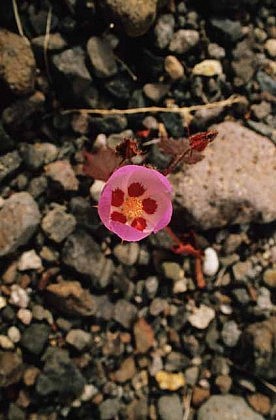 SPECIAL FEATURES: Gigantic vertical elevation gradients from valley to mountaintops, spectacular rugged canyons, very colorful rock formations, big wide open vistas galore, unique Mohave Desert vegetation from salt scrub up to Joshua trees and even Junipers at the higher elevations. “Badwater” is the lowest land in the western Hemisphere at 282 feet below sea level, while Telescope Peak rises to 11,049 feet. There are colorful wildflowers in wet years, and though wildlife is sparse, there’s a surprising diversity of reptiles, birds and mammals including scattered bands of desert bighorn sheep.
SPECIAL FEATURES: Gigantic vertical elevation gradients from valley to mountaintops, spectacular rugged canyons, very colorful rock formations, big wide open vistas galore, unique Mohave Desert vegetation from salt scrub up to Joshua trees and even Junipers at the higher elevations. “Badwater” is the lowest land in the western Hemisphere at 282 feet below sea level, while Telescope Peak rises to 11,049 feet. There are colorful wildflowers in wet years, and though wildlife is sparse, there’s a surprising diversity of reptiles, birds and mammals including scattered bands of desert bighorn sheep.
SPECIAL TIPS: Bring a good sun hat and lightweight long-sleeved cotton sun shirt plus plenty of sunscreen. Be prepared to experience a truly wild desert landscape that will surprise most folks with its awesome topography. Make sure that you can carry 2 liters of water. We will supply potable water for the entire trip (but fill your personal bottles at the motel).
STATUS: Death Valley National Park is the largest national park in the lower 48 states, and though it has a number of mostly dirt roads within it, 93% of of the park is designated Wilderness under the Wilderness Act of 1964. In 1984 Death Valley National Park was given biosphere reserve status.
TRAVEL/ITINERARY: The drive from the motel in Las Vegas to the areas we will be hiking is roughly 3 hours, and we’ll have you back in the strange glitzy city by late afternoon of the last day.
*Trip price includes equipment (backpack, day-pack, tent, sleeping bag and pad, eating utensils), food and cooking (3 meals/day plus snacks), cooking gear, trip planning, comprehensive safety instruction, all user/permit fees, transportation from town to and from trail-heads, and our professional guide/naturalist staff. There is a $300 discount if you bring your own equipment.
Book Your Trip!
Space is limited!
Have questions? Call (406) 823-0337
